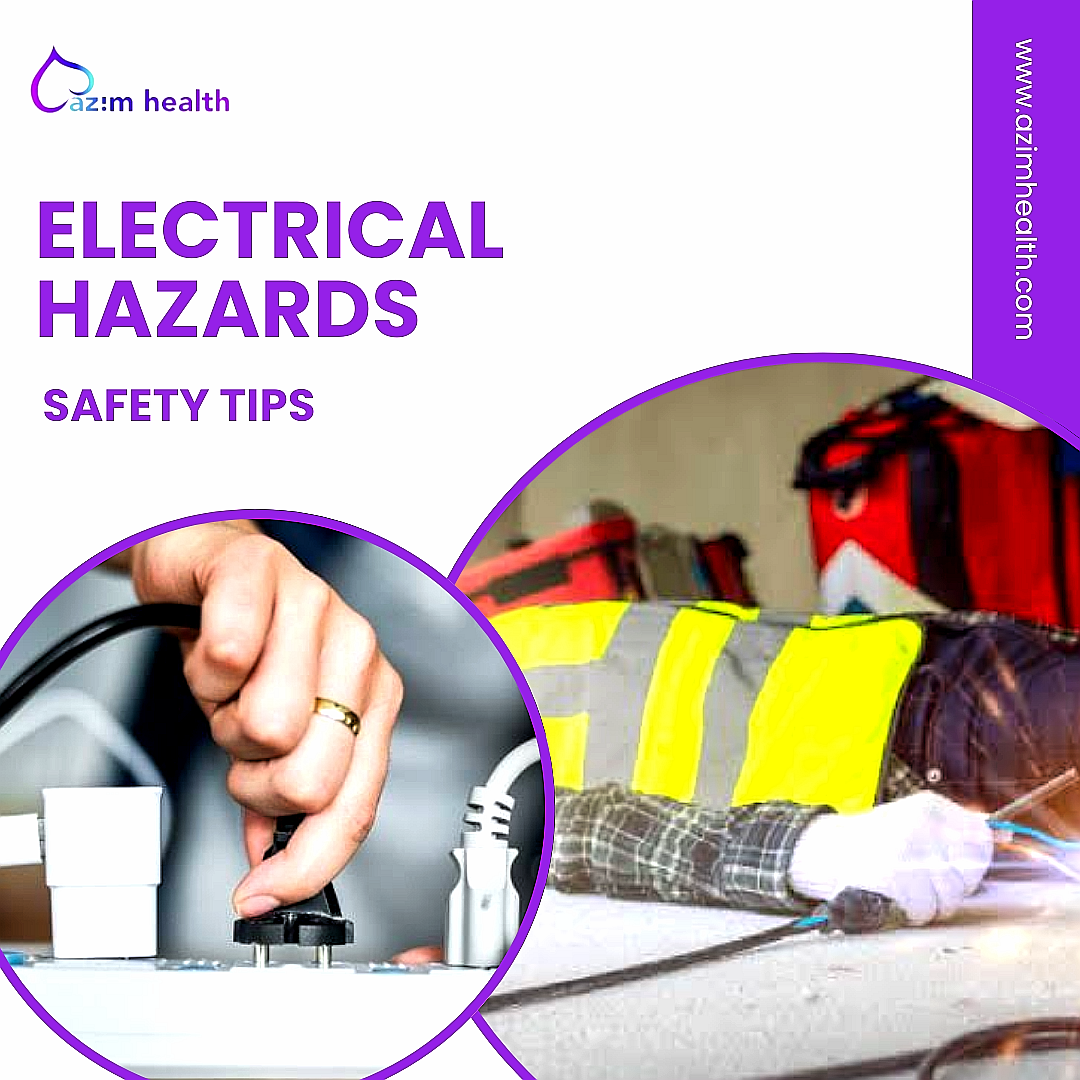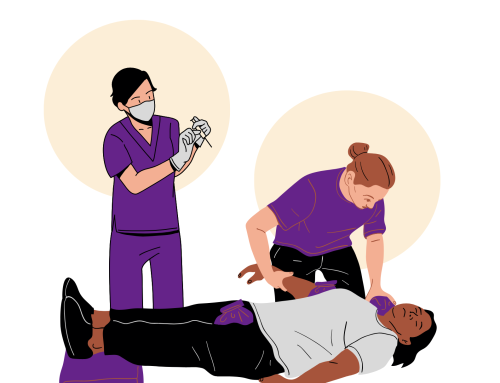Electricity, while providing convenience and power to our daily lives, also carries inherent risks that can lead to serious injuries and even death. Electrical hazards can occur in various settings, from homes and workplaces to industrial environments.
Understanding the nature of these hazards is crucial for preventing electrical accidents and ensuring safety.
Types of Electrical Hazards
Electrical hazards can manifest in various forms:
- Electric Shock: Electric shock occurs when a person’s body becomes part of an electrical circuit, causing current to pass through them. This can lead to a range of symptoms, from muscle contractions and tingling to respiratory failure and cardiac arrest.
- Arc Flash and Arc Blast: Arc flash and arc blast are intense electrical discharges that occur when electricity jumps between conductors. These events can generate extreme heat and light, causing severe burns, blindness, and even explosions.
- Electrical Fires: Electrical fires can result from faulty wiring, overloaded circuits, or improper use of electrical equipment. These fires can spread quickly and cause extensive damage to property and pose significant safety risks.
- Electromagnetic Fields (EMFs): EMFs are invisible fields of energy produced by electrical equipment. While low levels of EMFs are generally considered harmless, exposure to high levels may be associated with health risks, such as cancer, reproductive problems, and neurological disorders.
Factors Contributing to Electrical Hazards
Several factors can contribute to the risk of electrical hazards, including:
- Faulty Wiring and Equipment: Defective wiring, damaged insulation, and malfunctioning electrical appliances can create potential hazards.
- Overloaded Circuits: Exceeding the capacity of a circuit can lead to overheating, wire damage, and increased risk of fire.
- Improper Use of Electrical Equipment: Using electrical equipment in wet conditions, failing to ground appliances, and using extension cords improperly can increase the risk of electrical accidents.
- Lack of Safety Training and Awareness:
Inadequate knowledge of electrical safety practices and potential hazards can increase the likelihood of accidents.
Preventive Measures to Minimize Electrical Hazards
Regular Inspection and Maintenance: Regularly inspect electrical wiring, appliances, and outlets for signs of damage or wear. Have a qualified electrician perform routine maintenance to ensure the integrity of electrical systems.
- Proper Use of Electrical Equipment: Use electrical equipment only as intended and in accordance with manufacturer instructions. Avoid using appliances in wet conditions or overloading circuits.
- Safe Use of Extension Cords: Use extension cords only for temporary purposes and choose cords with the appropriate amperage rating for the intended use. Avoid plugging multiple appliances into a single extension cord.
- Awareness of Warning Signs: Be aware of warning signs of electrical hazards, such as sparks, crackling sounds, and unusual odors. If you notice any of these signs, immediately disconnect the electrical source and seek professional assistance.
When an electric shock occurs, an electric current passes through the body. The severity of the shock depends on the amount of current, the path it takes through the body, and the duration of the exposure.
Potential effects of electric shock
- Muscle contractions: Electric shock can cause muscles to contract involuntarily. This can range from mild twitching to severe muscle spasms that can lead to loss of consciousness and even death.
- Internal organ damage: Electric current can damage internal organs, such as the heart, lungs, and kidneys. This damage can be severe and even fatal.
- Burns: Electric shock can cause burns to the skin and internal organs. The severity of the burns depends on the amount of current and the duration of the exposure.
- Brain damage: Electric shock can damage the brain, leading to a range of neurological problems, such as seizures, memory loss, and coma.
- Cardiac arrest: Electric shock can disrupt the heart’s electrical rhythm, leading to cardiac arrest. This is a life-threatening condition that requires immediate medical attention.
Steps to take if you or someone else experiences an electric shock:
- Seek medical attention first, even if the person seems to be okay. Don’t forget that you can book medical professionals on Azimhealth any day and any time.
After seeking medical attention, before it arrives, you can do the following:
● Ensure safety:
– Make sure the area is safe and not in danger of further electrical hazards.
– Do not touch the person or anything else that is still in contact with the electrical source.
– If the person is unconscious or not breathing, seek urgent medical attention, you can book a doctor for prompt response with Azimhealth app.
● Disconnect the electrical source:
– If it is safe to do so, turn off the power to the circuit or unplug the appliance that caused the shock.
– If you cannot turn off the power or unplug the appliance, use a non-conductive object to push the person away from the electrical source.
● Check for responsiveness:
– Shake the person’s shoulders and shout their name loudly.
– If the person is unresponsive, check for breathing and a pulse.
● If the person is not breathing:
– Start CPR (cardiopulmonary resuscitation; only if you can) immediately.
– Continue CPR until the person starts breathing or until help arrives.
● If the person is breathing:
– Place the person in a comfortable position and keep them warm.
– Continue to monitor the person’s condition closely till help arrives.
Remember, prevention is always better than cure. By following safety precautions and being aware of electrical hazards, you can help to prevent electric shock from happening in the first place.
Conclusion:
Electrical hazards can pose serious risks, but by understanding the nature of these hazards, implementing preventive measures, and following safety precautions, you can significantly reduce the risk of electrical accidents and protect yourself and others from harm. Remember, electrical safety is a continuous process, and vigilance is key to preventing electrical hazards in all settings.
REFERENCES:
- Electrical Safety Foundation International. (2023). Electrical safety tips. https://www.esfi.org/
- National Fire Protection Association. (2020). Electrical safety in the workplace. https://www.nfpa.org/codes-and-standards/nfpa-70e-standard-development/70e
- Mayo Clinic. (2022, April 20). Electric shock. https://www.mayoclinic.org/tests-procedures/electroconvulsive-therapy/doctors-departments/pdc-20393895
- Centers for Disease Control and Prevention. (2020, September 11). Electrical safety. https://www.cdc.gov/niosh/topics/electrical/default.html
- Canadian Centre for Occupational Health and Safety. (2021, December 15). Electrical safety. https://www.ccohs.ca/topics/hazards/safety/electrical








Leave A Comment